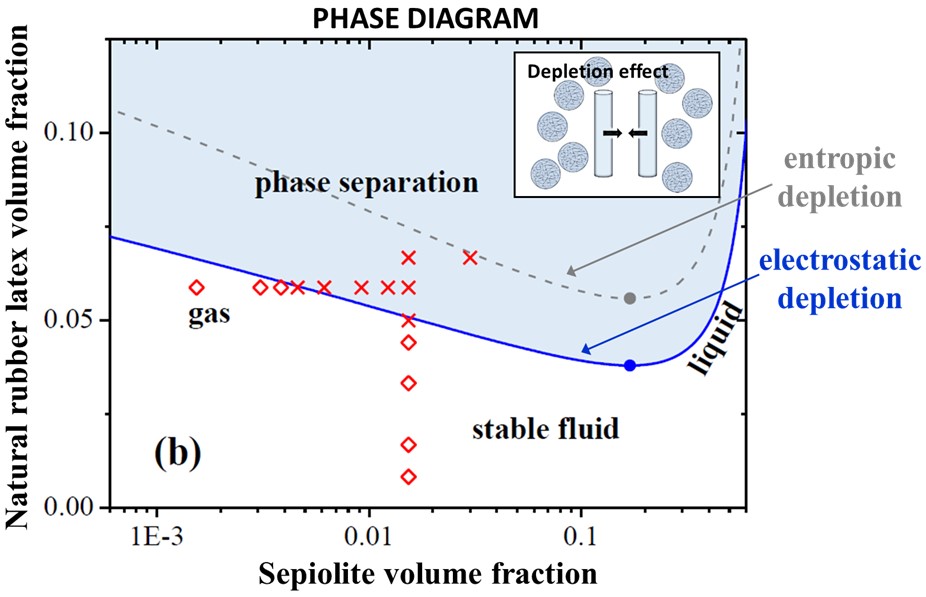I. Tagliaro, B. Di Credico, and A. Moncho-Jordá
Biocomposites based on sepiolite (Sep) clays and natural rubber latex (NRL) are novel green synthetic materials with significant mechanical performance obtained by an eco-friendly and sustainable mixing procedure, without the use of surfactants. In this work, experiments and theory are combined to investigate the stability of colloidal dispersions formed by a mixture of both negatively charged Sep fibers and non-adsorbing NRL particles. Experiments were performed by adding Sep fibers to NRL dispersions with different Sep/NRL volume fractions to evaluate the effect of Sep dispersion and NRL loading on the flocculation process. In order to theoretically understand the experimental results on colloidal stability, a density functional approach was applied to calculate the depletion interaction between two Sep fibers induced by the presence of naturally charged NRL, and an effective one-component mean-field free energy was developed to predict the phase behavior of the Sep/NRL mixture. The existence of a depletion attraction, enhanced by the electrostatic repulsion between Sep and NRL, is shown to be strong enough to induce the flocculation of the mixture at determined Sep and NRL volume fractions. The theoretical predicted phase diagram is in excellent qualitative and quantitative agreement with the experimental results, indicating that this electrostatically-enhanced depletion effect plays a key role in the colloidal stability of this system. To the best of our knowledge, this study represents the first attempt to tackle how depletion effects can be exploited to produce and control Sep/NR biocomposites.

J. Colloid Interface Sci. 560 (2020) 606.
